Researchers have found lakes that may shed new light on icy worlds in our Solar System.
High in the Canadian Arctic, two subglacial bodies of water have been spotted beneath over 500 metres of ice.
The water has an estimated maximum temperature of -10.5C, and would need to be very salty to avoid freezing.
There are thought to be similar cold, saline conditions in the subsurface ocean of Jupiter's moon Europa, yet also the potential to host life.
The findings, from a team led by the University of Alberta, have been published in Science Advances.
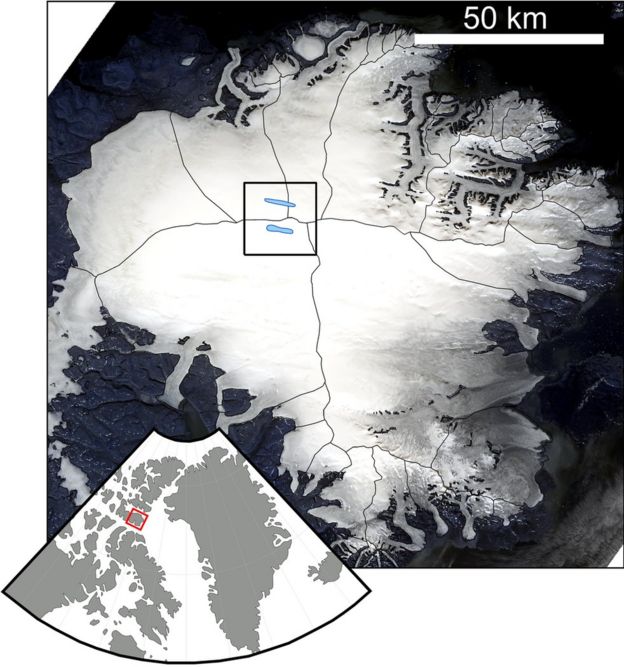
A Canadian first
The two lakes appeared in a radar survey of the Devon Ice Cap, which sits on Devon Island, in Canada's northern Nunavut territory.
"I was super surprised, and a little bit puzzled," Anja Rutishauser, the study's lead author, said of the discovery. "I was definitely not looking for subglacial lakes."
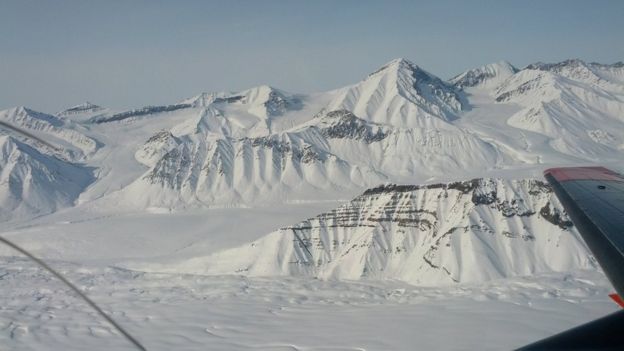
Although water systems beneath large ice sheets are being found to be increasingly common, Devon Island's ice cap was thought to be frozen to the bedrock beneath.
These are the first subglacial lakes to be observed in the Canadian Arctic, and are estimated to cover areas of five and eight square kilometres respectively.
"It's an amazing finding, and one that I really wasn't expecting from the geophysical survey of this small ice cap," commented Prof Martin Siegert from Imperial College London, who was not involved in the study.
"To my knowledge, this is a unique lake system. Of the [more than] 400 subglacial lakes in Antarctica, all of them are thought to comprise fresh water. Hence, whatever might be living in it may also be unique," he added.
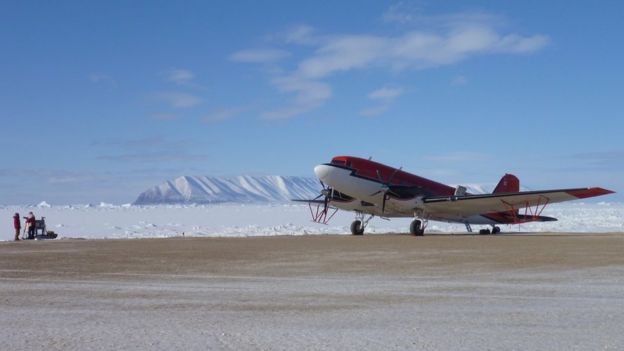
Life below zero
The water in the lakes is estimated to be five times as salty as seawater, allowing its freezing point to be lowered below that of fresh water.
Other subglacial lakes in Greenland and Antarctica contain fresh water, generated by melting at the base of the ice. Geothermal heat rises from the underlying rock, and is insulated by the thick ice sheet above.
The Canadian ice sheet is not thick enough to provide this insulation
Salt-rich water has been studied beneath Taylor Glacier in Antarctica's McMurdo Dry Valleys, but this is supplied by an ancient marine water basin.
The mountainous location of these lakes places them above previous sea levels, and their salinity is derived from the high salt content of surrounding rock.
"It is interesting," notes Prof Jemma Wadham from the University of Bristol, "that the more places we look, the more subglacial lakes we find. Just like in non-glacial environments, there could be a huge diversity of lake types and life habitat conditions, and one size does not fit all."
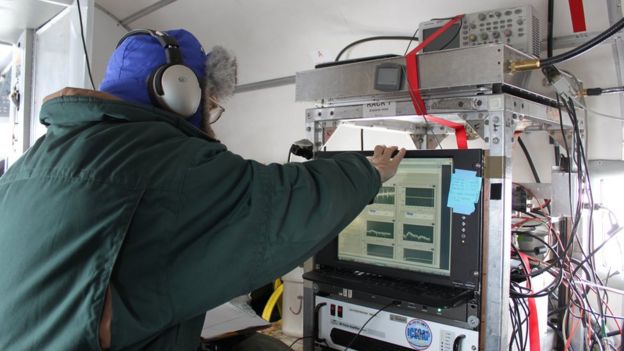
A pocket of Europa
There are many answers researchers want to search for next. There may be an entire network of lakes in this region, beyond the two so far observed, and their size has yet to be determined.
However the potential for these environments to host life is a pressing question, as they may represent a largely isolated microbial habitat.
The study's authors suggest the lakes may have been sealed off from surrounding environments for up to 120,000 years.
"The probability of life to exist in these systems is high, though the modelled temperatures might suggest that the biological activity would be severely limited due to the low temperature," Dr Alison Murray of Nevada's Desert Research Institute told BBC News.
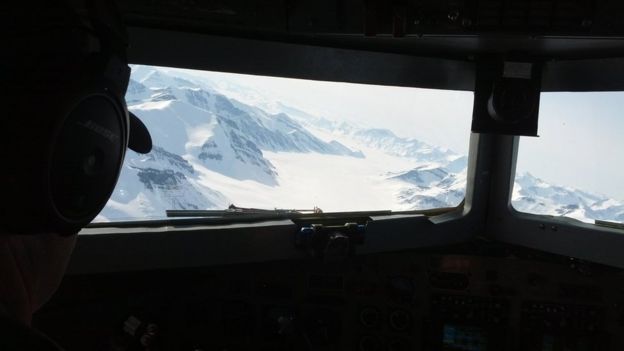
They may also provide a window to life beyond Earth.
Dr Claire Cousins from the University of St Andrews explains: "While the chemistry of these lakes may be somewhat different to ocean environments on icy moons such as Europa, their otherwise extreme conditions will help us understand the habitability of hypersaline sub-ice environments."
While further radar surveys are next on the list, Anja Rutishauser and her colleagues hope to be able to drill into the lakes' waters one day, to better understand any ecosystem within.
Such work could, Dr Murray says, provide "a key to understanding the life-supporting nature of such systems which may occur in the icy and ocean worlds of the Solar System and beyond."
Source:BBC news

